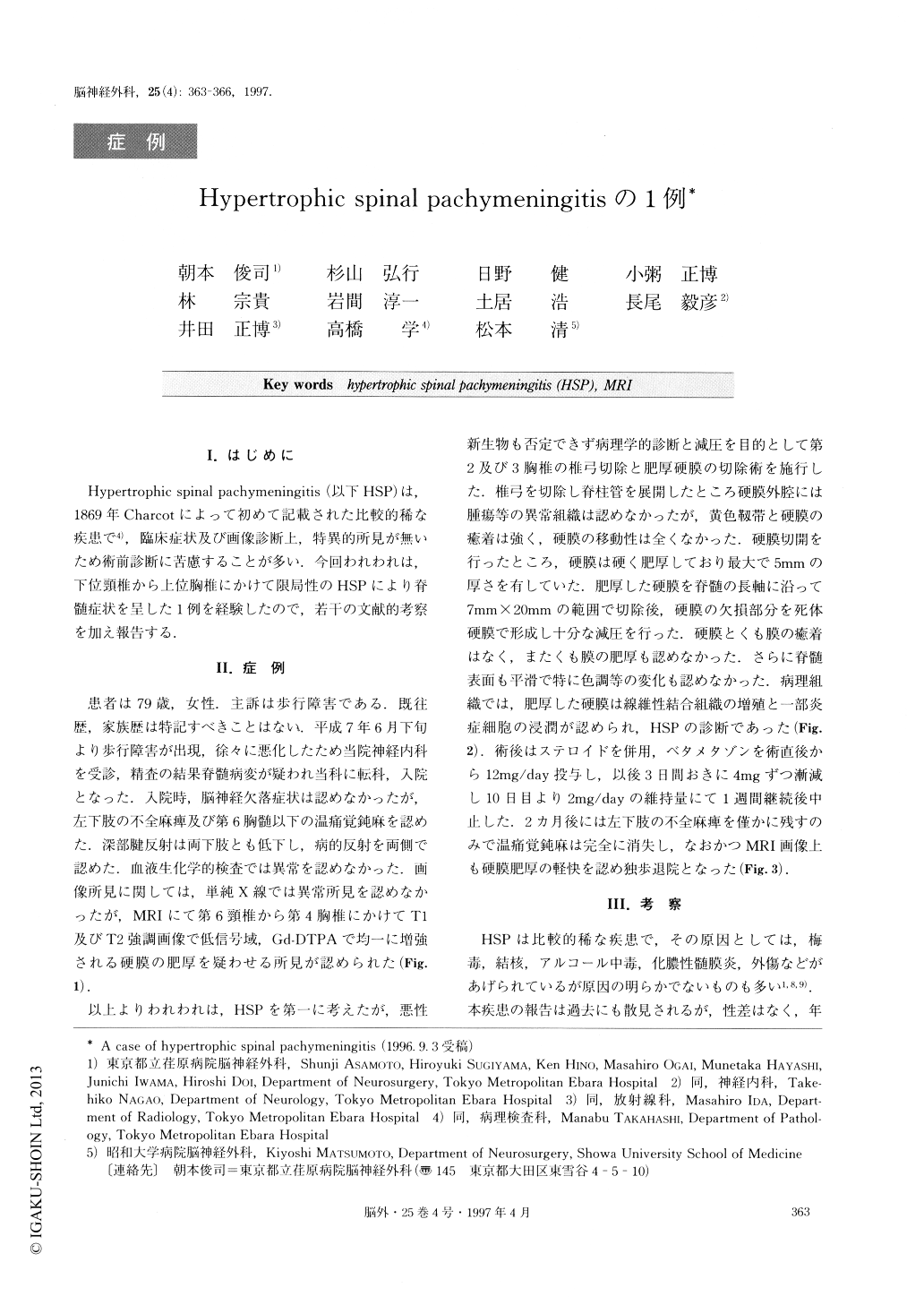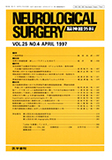Japanese
English
- 有料閲覧
- Abstract 文献概要
- 1ページ目 Look Inside
I.はじめに
Hypertrophic spinal pachymeningitis(以下HSP)は,1869年Charcotによって初めて記載された比較的稀な疾患で4),臨床症状及び画像診断上,特異的所見が無いため術前診断に苦慮することが多い.今回われわれは,下位頸椎から上位胸椎にかけて限局性のHSPにより脊髄症状を呈した1例を経験したので,若干の文献的考察を加え報告する.
A 79-year-old woman was admitted to our hospital complaining of gait disturbance. At the time of admis-sion, she had incomplete monoparesis of the left lower extremity. with a sensory level of T6. MR images showed a thickened dura at the C6-T4 vertebral levels. The thickened dura showed low intensities on T1- and T2-weighted images, and was homogeneously enhanced by Gd-DTPA. Hypertrophic spinal pachy-meningitis (HSP) was suspected, and laminectomy was performed from T2 to T3. The thickened dura was found and partially resected. Microscopically, the dia-gnosis was HSP. Steroid therapy was initiated after surgery. Postoperatively, the patient's physical status and radiographic images improved. The etiology of HSP is not clear in most cases. It is difficult to dia-gnose radiographically, although MR imaging can help differentiate it from other disorders. T1- and T2-weighted images of HSP show low intensities, and the T1-weighted image is homogeneously enhanced by Gd-DTPA. Treatment is early decompressive surgery with possible excision of the involved dura. Steroid therapy was effective in our case.

Copyright © 1997, Igaku-Shoin Ltd. All rights reserved.


